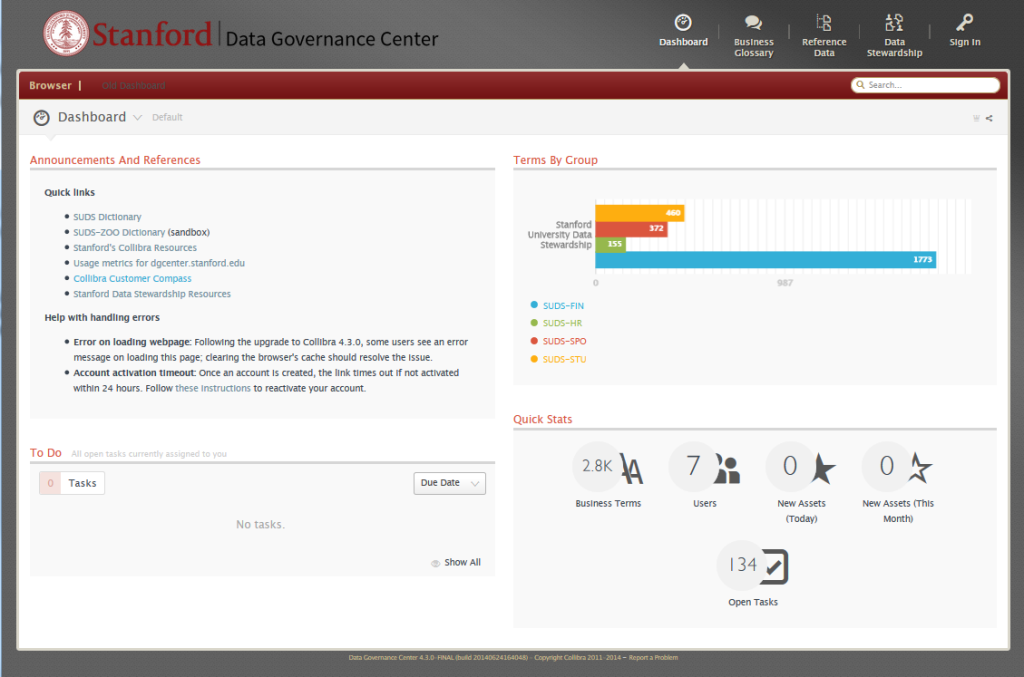New Data Stewardship Coordinator
Monday, June 8th, 2015We are delighted to announce Stanford’s new Data Stewardship Coordinator, Kathleen Warmoth.
Kathleen has been with Stanford for 10 years, most recently serving as the Academic Data Manager in the School of Medicine. She has a great deal of experience with data structures, definitions and the appropriate application of various data types. She has implemented consistent nomenclature associated with faculty data across the school, and established best practices for using this data. She has also worked closely with the school’s Data Governance Board, MedIRT, Office of Institutional Planning, and various other Dean’s Office units as a subject matter expert to ensure that faculty data correctly syncs to downstream systems in order to provide accurate reporting and look-up tools across the school. She has also been an active participant in the university’s Faculty Data Stewardship group.
We are very pleased to welcome Kathleen as the coordinator of Stanford’s data stewardship and data governance efforts. Please feel free to contact her at kwarmoth@stanford.edu.


